Text
Final Fieldwork :(
For the final assignment, I chose to interview one of my classmates about what she would do in the event that she feels sick or unwell. The questions and answers were as follows:
Who do you call when you feel sick? Usually, when I feel sick, I call one of my parents, and the absolute LAST person I call is the doctor.
What strategies do you use to get well? I drink water, and make sure to get plenty of rest.
What strategies do you use to relieve aches or pain? Stretching, pain medicine, and WATER (the solution to everything in my opinion).
Are your healing strategies specific to your family, ethnic group, religious affiliation, or local or national context? Yes, on my dad's side they usually drink a lot of fluids as well which is one of the main reasons I think it's important to do so when you're sick.
Are your healing strategies guided by moral, economic, religious, or legal mandates or constraints? ABSOLUTELY NOT, I don't even like taking medicine.
How do you determine what made you sick so you don't get sick again? I don't think about what makes me sick:)
When you are sick, how do you prevent others from being infected? I typically isolate myself, alert those around me, and mainly tell anyone who has been around me to be careful and monitor themselves in case they get sick as well.
How do you feel about getting sick? I don't like getting sick, but every once in a while it's okay because I feel like in order to strengthen your immune system, you have to get sick at some point.
Is there a social cause of your illness or disease? Yes, sometimes it is due to the poor hygiene of those around me (like my roommate).
0 notes
Text
A Sit Down with my Best Friend :)
For this interview, I chose to interview one of my closest friends, Andre Lyn. I met Andre a couple years ago while working, and him and I quickly became close. I learned Andre was an immigrant a few months into our friendship, and when we were tasked with interviewing an immigrant, Andre was the first person I thought of. Andre was born in Falmouth Trelawny, Jamaica on March 20, 2001. Falmouth Trelawny is right next to Montego Bay and Andre constantly tells stories of his time there. Originally, Andre went by his birth name, "Devandre", but after moving to America he quickly dropped the first few letters and went by "Andre".

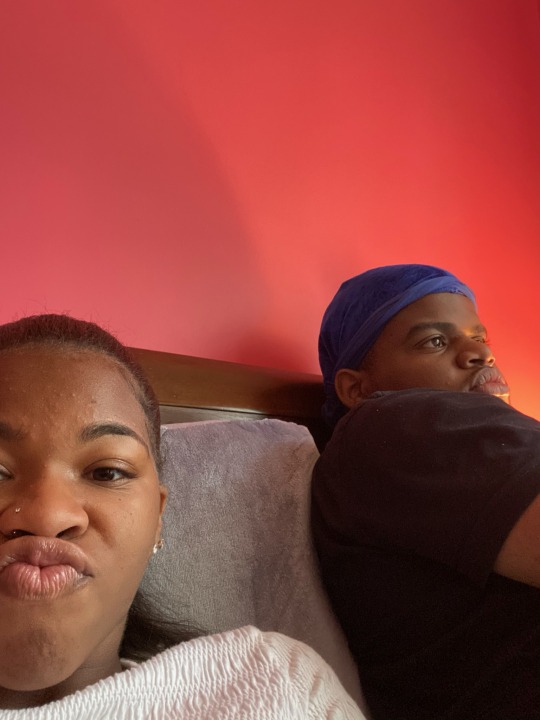
Although he was not necessarily "poor" in Jamaica, Andre along with his family members moved to America in September 2011 for better opportunities. While doing this interview, I learned that a lot of Jamaicans travel to the United States either temporarily or permanently because of the jobs and pay here.
After moving here, Andre recalls a huge culture shock. First, he will never let me forget how cold it was for him when he got here (this was the part he was most passionate about). Also, the education system is very different in Jamaica, so because Andre ca, over in the 6th grade, to Americans he was in middle school, but to the Jamaicans, he was in high school. Although the native language of Jamaica is VERY similar to the English language, Andre endured a lot of bullying due to his strong accent, and inability to "correctly" pronounce certain English words.
My personal favorite part of Andre's story took place one day while he was in choir class. The class had to sing the "Star Spangled Banner", and Andre's classmates began teasing him, as they were under the impression that he wouldn't know the song. My best friend however, is arguably one of the best singers you'll hear in this lifetime. So, imagine the looks of disbelief on these kids faces when Andre started outshining them with the national anthem.
With time, Andre eventually got the hang of English, and after he mastered the language, he talked about how things got easier, and he was never treated like an outsider again.
0 notes
Text
The Life of Henrietta the Hershey Bar
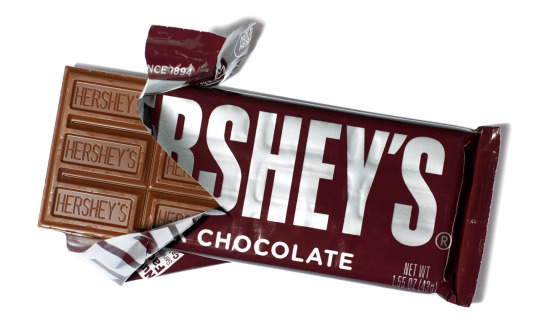
This is Henrietta the Hershey's Chocolate Bar (I was going to show a real picture but I ate her before I could take a picture), I bought her from Benny's Munchies for $1.58. The ingredients listed on her wrapper are as follows: sugar, milk. chocolate, cocoa butter, milk fat, soy, PGPR, and natural flavor. Despite her simple appearance, Henrietta has very complicated roots which stem from countries including Mexico, Canada, Ivory Coast Ghana, Indonesia, Ecuador, China, and Egypt. Henrietta's major ingredients are sugar, cocoa butter, and soy. Sugar is made in the leaves of the sugarcane plant through photosynthesis and stored in sugarcane stalks. Cocoa butter (the villain of this story) is the fat that comes from cocoa beans; the beans are roasted, stripped, and pressed to separate the fat (cocoa butter). Finally, soy is grown and harvested from planted soybeans.
The harsh, and sad truth about Henrietta's origin story is the horrible conditions those who created her roots go through. The chocolate business is full of violence, child labor, and underpaid workers who end working their entire lives for a salary we Americans could typically make in a month. Some of the places that produce chocolate are actively involved in Civil Wars, and the workers are still expected too harvest this essential part of Henrietta and her relatives. Additionally, there are tons of hidden costs, we consumers have no idea about. The sad truth is that the people who work day after day to produce cocoa and its sub products only see a mere 3% of the revenue. The other 97% is given to big companies, and essentially those who don't deserve it. The two international companies who are currently dominating the chocolate trade are Hershey Chocolate and Mars Inc. with a combined ~74% of shares in the market. In the United States, the Food and Drug Administration (FDA) regulates the chocolate trade, oddly enough they still allow for chocolate to be provided to the U.S.
After it has been harvested, the cocoa is usually fermented and covered with banana leaves, dried and packaged for transportation, and domestic transporters carry the packaged beans to either warehouses or processing factories. From there, the prices are set in the commodities market and distributed worldwide. The average store owner will enjoy a profit margin of 55-75% from the sale of chocolate. One thing producers focus on is how chocolate is marketed to consumers. Different companies have different strategies, but the most common techniques portray chocolate as delicious, appealing, and in some cases healthy. The company that produces Ferrero Rocher chocolates lean more towards making their chocolate appear to be "high class" which is why it is wrapped in such fancy, gold paper.
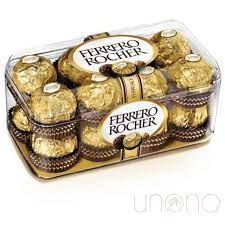
The most common strategy for marketing chocolate however, is to associate it with certain holidays like Valentine's Day, Halloween, and Christmas. During these three holidays, chocolate sales skyrocket and the companies that sell the chocolate see very high consumer numbers
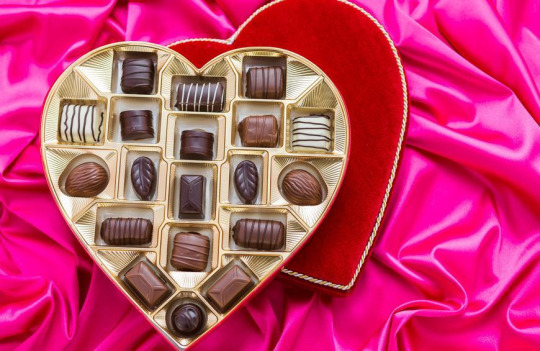

youtube
All in all, Henrietta has a pretty sad life, and we're not even going to give a word to describe where she came from. I feel pretty bad for her, and after doing this assignment I might have to keep my distance from chocolate bars like Henrietta...
Major References 1. https://www.weforum.org/agenda/2020/11/cocoa-chocolate-supply-chain-business-bar-africa-exports/
2. https://www.foodcircle.com/magazine/cocoa-pricing-commodity-market
3. https://www.mvorganizing.org/how-much-profit-does-a-store-owner-make-on-a-bar-of-chocolate/#:~:text=chocolate%20so%20expensive%3F-,How%20much%20profit%20does%20a%20store%20owner%20make%20on%20a,margins%20between%2055%20to%2075%25.
0 notes
Text
A Million and Three Theories About Social Class
The first article above describe Karl Max's theory of social class which involves the bourgeoisie and proletarians. In this theory, the bourgeoisie own the means of production, and the proletarians are the individuals who work for money. This article is a good example because the company Apple essentially owns the labor the Chinese factory workers provide them with. In this case, the factory workers would be proletarians, as they do not own anything besides their own labor (and they can barely even say they own that).
The above article is an example of Weber's theory of social class which argues that the only part of a person's social class is determined by how much property they own (power, prestige, and wealth). In this article, Jeff Bezos is someone who has a very high social class and has power of the public due to him owning all of Amazon and its facilities. According to Weber's theory, because Bezos has a lot of money and property, he has an immense amount of power and essentially control over those in lower social classes.
The final article shown is one that exhibits Bourdieu's theory of social class. According to Bourdieu, social class is defined as a group of individuals that share a common nature along with the same external living conditions. Essentially, your social class is determined by how well you fit in with the group, and can be affected by what you're taught and how you grow up. The above article shows this aspect of social class because it shows how you can be taught certain ideas that place you into a specific group of society. The test provided to the students in the article was meant to influence their thinking, and thus give them similar mindsets to whomever may have created the test. By doing so, these students would be in a higher social class, as they fit better with the group of individual(s) distributing the test.
0 notes
Text

To summarize my chart it goes as shows: The one and ONLY Ego of the chart represents me. I have one brother, a half-brother, and two married parents. My mother has one sister, two half-brothers, two nephews, two great nieces, a mother and father who are divorced, a step mother, 5 uncles, and 2 aunts. One part of this chart that needs clarification would be on my mothers side. Between her two aunts the adopted daughter was adopted by my mother’s aunt. Therefore, my mother’s two aunts both have a bracket connecting them to their daughter. My father has 1 sister, 2 half-brothers, 5 nephews, 3 nieces, 4 aunts, and 3 uncles. His mother is deceased, and he doesn’t know a whole lot about his father’s side so there is a question mark where his grandparents would be. At the very top of the diagram are my great-grandparents.
2 notes
·
View notes
Text
Will boys just be boys and girls be girls?
As a society, we have a way of naturally encouraging certain behaviors amongst each sex in a different way. For example, society's standards encourage men to be strong and emotionless, while it encourages women to be weak and more emotionally vulnerable. Gender roles and stereotypes like these can be observed in multitudes of p[laces, including children's commercials. As a child, you do not think anything of them, but these commercials can affect the ideas children have about others and themselves.
Gendered Behavior in Commercials
youtube
youtube
youtube
The commercials above all show gendered behavior geared towards young males. Men barbecuing, listening to loud music, playing with cars, and their competitive nature are all examples of the traits and behaviors men typically pick up at a young age.
Commercials for young girls are typically more quiet in terms of the music being played, bright, colorful, glittery, and have a way stronger group dynamic than the boy commercials.
youtube
youtube
One of the most useful tactics these commercials use to promote gender roles is who is show in the commercials. For all the examples above, there were either 100% boys shown or girls, never a mixture of the two. Seeing this as a child encourages children to associate these commercials with one sex. This is primarily where children pick up on "dolls being for girls" and "cars being for boys"
Non-gendered Commercials
Non-gendered commercials were very scarce and hard to come across during this assignment. I took it upon myself to look up some examples and the best examples are from recent commercials. I think this is because parents nowadays are voicing their problems with heavily gendered commercials and the companies showing these commercials are adjusting. Here are some non-gendered commercials.
youtube
Okay, I know I said commercials with an "S", but there truly aren't as many gender-neutral commercials as there should be. Luckily, the number of non-gendered commercials is growing, and for the sake of the next generation, I hope these commercials don't enforce gender roles as strongly as the ones I grew up watching.
1 note
·
View note
Text
Celebrating Our Differences ♡

1. How long has your family lived in this country? -My family has been in this country for as long as I can remember and probably as long as you can think. All of my most recent ancestors lived in this country all their lives, and there really isn't any trace of immigration in my family unless we're referring to when some of my ancestors were forced here. That being said, my older relatives were slaves, which is the main reason I have a hard time tracing my family history and nationalism. I can only assume that I have West African roots since that is were the majority of slaves came from.
2. Where did your family come from? As an African American, my roots are very blurred and can't truly be traced unless looking at some online resource that looks at your DNA or something of that sort. Like I previously stated, my ancestors were slaves forced to come here, so my assumption is that my family is from some West African country along with a dash (or two) of European.
3. Has your family embraced American Nationalism?
My family has absolutely embraced American Nationalism. If you ask me, they've embraced it a little too much. For example, I really have no idea where either side of my family is from. This means they've embraced the American nationality so well it has been passed down generations until that's all I know; this may have been intentional or forced, but nevertheless I know for a fact my family has embraced American Nationalism.
1 note
·
View note
Text
Alexa, play "This is America" by Childish Gambino
Racism primarily refers to the thoughts, actions, institutional patterns, and policies that are designed against a specific group (or groups) of people. There is a lot of history behind racism and tons of concepts that make it up, but I will only be focusing on six of the concepts I believe have the biggest influence on the race we see in America.
1. Miscegenation a term that refers to interracial marriage, or marrying outside your race



There is absolutely nothing wrong with marrying outside of your race, it is really just a matter of personal opinion. This concept was used to ensure that mixing of races was not happening, and for a long time, marrying or having relations with someone outside of your race was illegal. Today, there are tons of interracial couples including those pictured above.
------------------------------------------------------------------------------
2. Microaggressions these are everyday verbal or behavioral instances that communicate a negative message about a person's race, gender, sexual orientation, or religion.

Unfortunately, this is a statement many black people are too familiar with. This statement not only suggests that all black people act alike, but it also paints them in a negative way. I've heard this statement when a black person speaks in "proper English" or in a subtle, quiet way. For example, people have said this to me when I use proper grammar as though black people are incapable of speaking like this.
------------------------------------------------------------------------------
3. Institutional Racism this is the part of racism that is structured through policies and the government


In the early 1900s, there was a beach bought by a Black family in the Los Angeles area of California. At the time, blacks were not allowed on every beach so this family bought the land for black people to enjoy. This land was eventually seized by the state under claims of Eminent Domain, which gives the government the right to seize land if it's for public use. Part of this law is that the owner of the land be compensated; the black family however was never compensated as their seized land grew and became worth millions of dollars. The family was just recently given their land back. This is a primary example of institutional racism because laws like Eminent Domain were designed to prevent black families from gaining generational wealth, and essentially stay poor.
------------------------------------------------------------------------------
4. White Supremacy the belief that white people are biologically different and superior to other races

Sadly, there are still plenty of white supremacists in this country, and these individuals may be found with Confederate Flags or Nazi Flags like those shown above. White supremacists today work to demean minorities and make sure that "whites remain the superior race".
------------------------------------------------------------------------------
5. Hypodescent also called the "one drop of blood rule" this rule says that even the slightest trace of black in a person places them in a low group below white people

This rule began from slavery and was designed to make sure that mixed children aren't placed in a group with white people.
------------------------------------------------------------------------------
6. Racialization
assigning a specific racial character to a person or group

This cartoon was released after Serena Williams had a few words for the umpire during the 2018 U.S. Open match against Naomi Osaka. After receiving several incorrect calls, having her previous set ruined, and breaking her racket in frustration Williams told umpire Carlos Ramos he owed her an apology and went off on him. After the match, this cartoon was released, giving Williams an obnoxiously large nose, mouth, ears, and just making her fit the "big, angry black woman" look so many people assign to black women nowadays.
4 notes
·
View notes
Text
Battle of the Sexes
On Friday, I observed the behaviors of my Biology classmates via Zoom. What I found was intriguing, but not surprising. Throughout the entire class, no student turned on a camera once, not even on accident. Based on the roll call conducted towards the end of class, there 11 men and 12 women in my class, which is just about 50/50. However, the women carried the majority of class conversation, speaking around 37 times; the men spoke a mere 20 (almost half that of the women!). Both these numbers would be higher, but this class is primarily lecture material which explains the low speaking times for both men and women. My professor is a male (not included in the count of 11), which surprising enough did not have an influence on how often the men of the class spoke. However, my professor does have a competitive essence to his teaching style which may affect class interaction. While lecturing, my professor tends to ask questions like "Are you with me?" and tell the class "I need to hear three yeses to continue.". I noticed that the constant asking of these questions seemed to make the boys respond faster than the girls; like they wanted the professor to hurry up and get to his point. The girls however, tended to speak slower, ask more questions, and answer the majority of the review questions at the end of the lecture.
0 notes
Text
“We all must serve our Emperor
Who guards us from the Huns
A man by bearing arms
A girl by bearing sons”
- Honor To Us All from Mulan
0 notes
Text
Cause I'm on the Block

1. The location I chose to capture was Rawlings Dining Hall. I was going to draw a map of the main campus, but that was too complicated, and one of the places I along with other students are typically at is the dining hall. While visiting you can find a variety of different foods to try; from burgers to salads, pasta to fried chicken, the café has it all available to students with one swipe of their Bear Card. The seating area for students, staff, and visitors is kept relatively clean and also gives students the opportunity to do their work by providing numerous outlets in the café along with comfortable seating for everyone.
2. While making my observations, I noticed a number of intriguing finds: - In most of the booths, under the seats, there are outlets for you to charge your devices - There is a section of the café designated for the student-athletes to eat - Wednesday is soul food/fried chicken Wednesday and it's best to get to the café as soon as dinner starts (3:30-6:00pm on weekdays) to get access to all the different foods on this day -"The Melting Pot" has different themed food everyday (soul food, Asian food, etc.)
3. A few things I would have expected to find in the café that weren't there were ketchup, syrup in the mornings, and a number of drinks. From previous encounters with the hall, these items were missing primarily because the students used them all, or due to issues with the cafe's supplier.
4. As far as impact from COVID-19 goes, there weren't as many accommodations as I expected in the café. Masks are readily enforced for all visitors and staff, and employees frequently clean the tables and high-traffic areas. Other than that, there weren't a ton of tells that showed the café being affected by the pandemic.
1 note
·
View note
Text


After taking inventory of my room and evaluating my wants and needs, I am very shocked at the results. I had much more items than I thought, and I also found myself confusing wants for needs. This really exemplifies the role of consumer culture on our society. As an individual affected by consumer culture, it is clear that material things have a large impact on my life. Especially because I felt that I needed to buy a lot of these items.
Inventory Chart
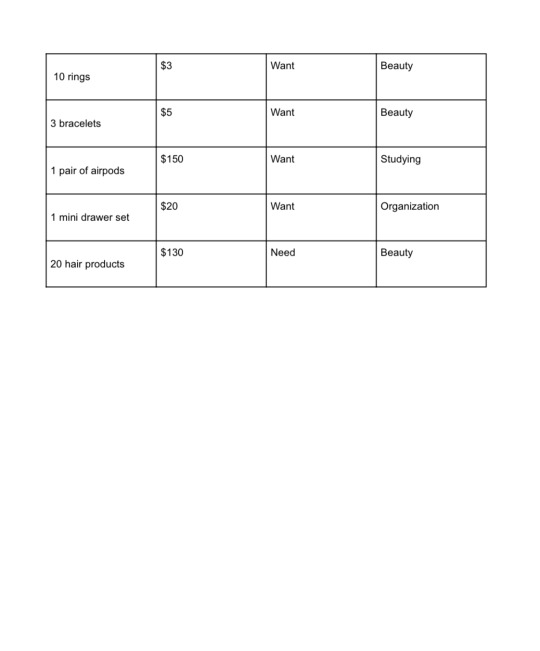




0 notes
Text

One technological accessory that is becoming more and more popular is the stylus. The most popular styluses are those made by Apple, or the Apple pencils. Essentially, a stylus is "a pen shaped instrument with a round rubber piece that moves effortlessly across touchscreen devices.". (2020) A stylus makes it much easier to do specific tasks on a touchscreen device, especially writing. Use of the stylus peaked with Apple's release of its First Generation Apple Pencil in 2015. Since then, other companies quickly started producing styluses similar to the Apple Pencil and today there are several kinds of styluses that can be used on laptops, phones, tablets, and other touchscreen devices.

I personally love using the Apple Pencil because of how easy it is to use, lightweight, charges fast, and is environmentally friendly. For example, if my pen is dying I can easily plug it into my iPad and charge it from 5% to 100% in a matter of 20 minutes. This is extremely convenient for me because of how often I use my devices; the charge also lasts throughout the day which is an added bonus. I am not dependent on my Apple Pencil, it has however made taking notes a lot easier for me all while saving paper.
Although I am bless to see the good things that come from using an Apple Pencil, other people unfortunately get the short end of the stick when it comes to the stylus. Although the Apple Company advertises its products as being "Made in California", pieces that make up along with a number of physical pencils themselves are actually manufactured in South Korea; this is typical because the Apple Co. has over 300 factories in Asia alone. The average Apple factory worker in that part of the world is 4,000 yuan a month (562 USD) Additionally, less than 1% of these same workers overtime or night shifts voluntarily (Mark Gurman & Bloomberg, 2015). Meaning, working conditions for the workers are categorized by long, miserable hours of work with little pay.
This means Apple is one of the many companies who makes profit through uneven development, where companies essentially profit on work from poorer, less developed countries.
Sources:
1. Gurman, M., & Bloomberg. (2019, September 9). Apple admits BREAKING Chinese labor laws in the world's LARGEST IPHONE FACTORY. Fortune. https://fortune.com/2019/09/09/apple-admits-breaking-china-labor-laws-foxconn-iphone-factory/
2. What is a stylus? How does a stylus work? Amsterdam printing blog. Small Business Know-How | Empowering you with fresh ways to be remembered... (2020, April 6). Retrieved September 10, 2021, from https://www.amsterdamprinting.com/blog/what-is-a-stylus/#:~:text=A%20stylus%20is%20a%20pen,moves%20effortlessly%20across%20touchscreen%20devices.&text=A%20stylus%20is%20used%20by,writing%20instruments%20into%201%20tool.
0 notes
Text

The picture above shows one of the many “tech waste” plants that are all over the world. At these sites, unused technology from big countries (like the US) is dumped in a smaller, more poor country. This is an example of uneven development, when some countries are greatly impact by globalization and others or harmed.
0 notes
Text

Here, you will notice an example of increasing migration. This is when a group of people leave their country of origin and flee to another usually in hopes of finding a better or safer life.
0 notes
Text

The picture above can be used to exemplify flexible accumulation by companies. The popular tech company Apple has numerous factories worldwide. However, they have 330 factories in China, where they can get away with having the workers work longer hours for less pay. So essentially Apple is capitalizing on China’s low labor costs.
0 notes
